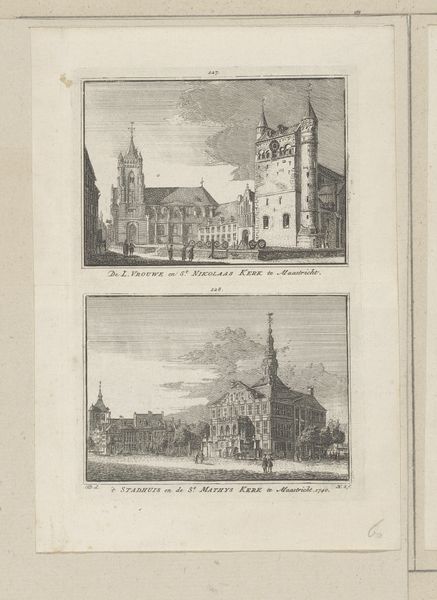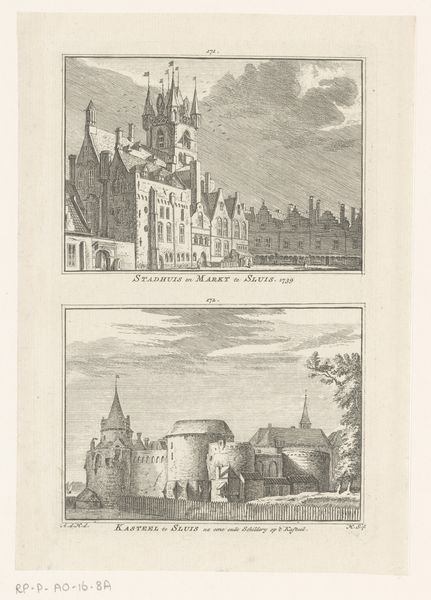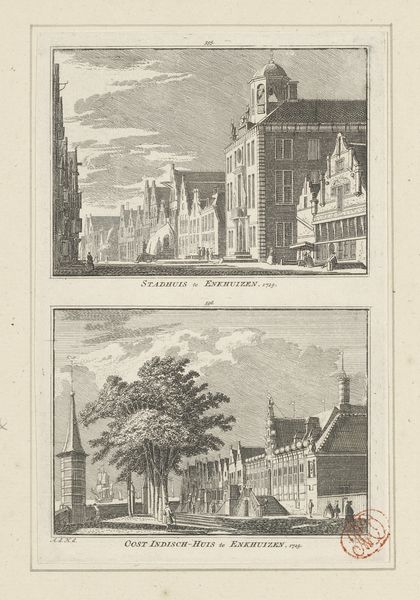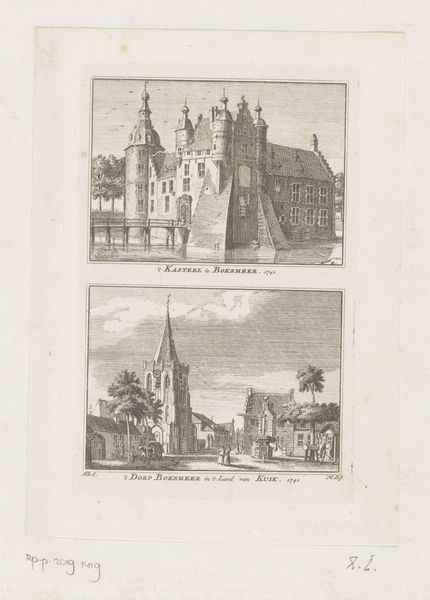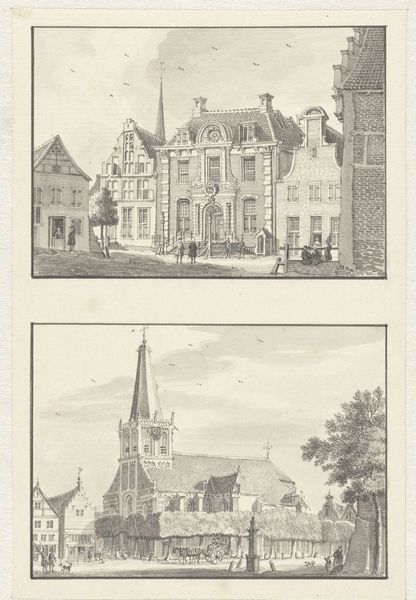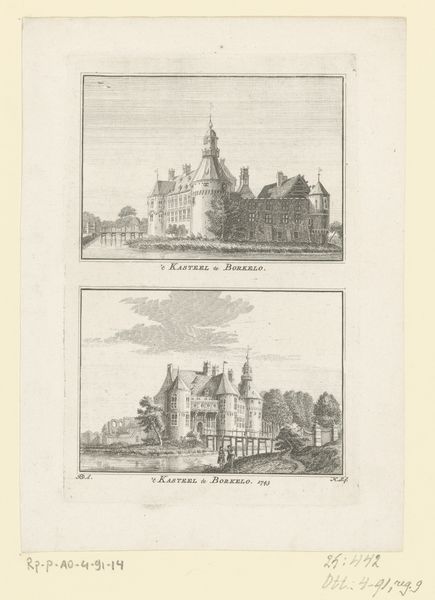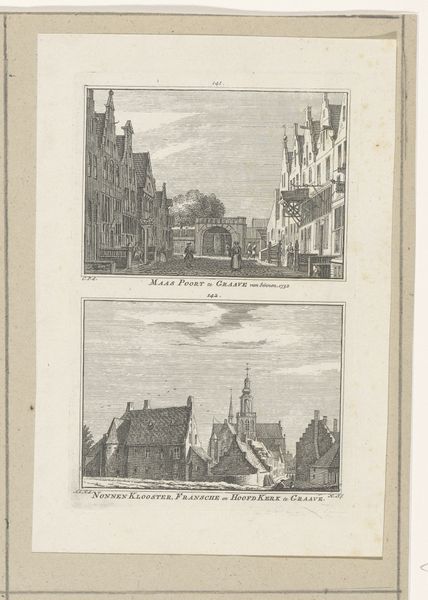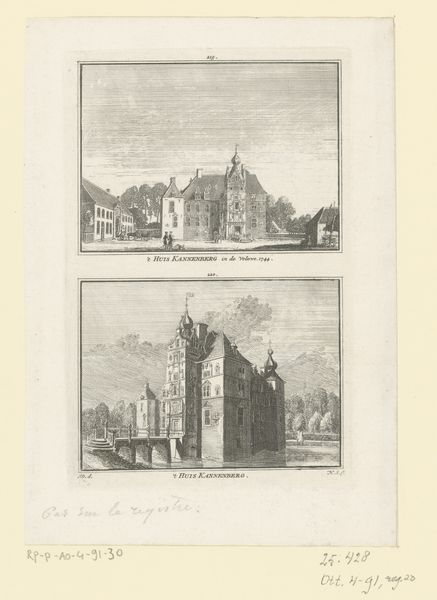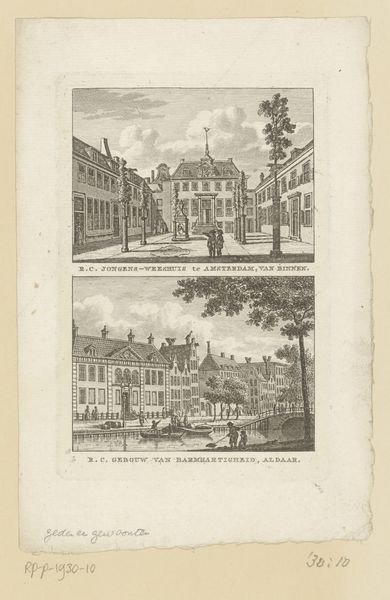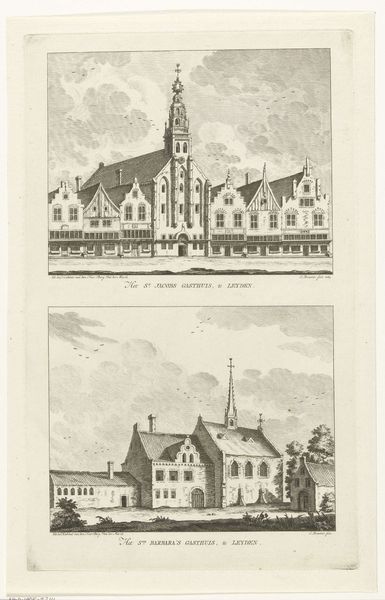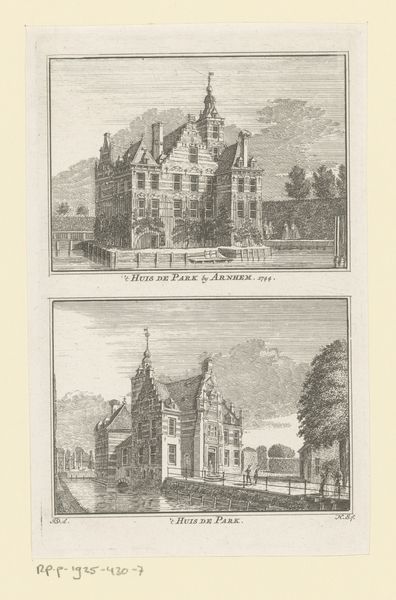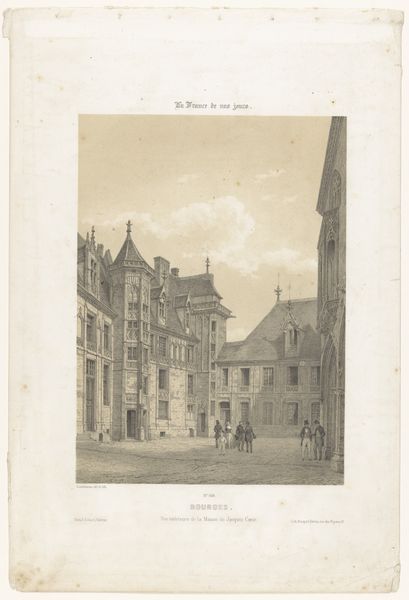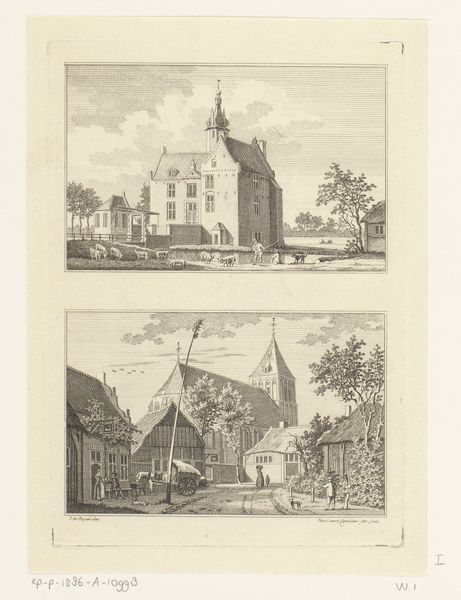
Gezicht op de markt en de Hoofdwacht en gezicht op het stadhuis en de Hoofdwacht te Grave, 1732 1746 - 1792
0:00
0:00
hendrikspilman
Rijksmuseum
Dimensions: height 169 mm, width 111 mm
Copyright: Rijks Museum: Open Domain
Hendrik Spilman's engraving from 1732 captures the market and town hall of Grave, emphasizing the Hoofdwacht, or main guardhouse. These buildings aren't merely stone and mortar; they are symbols of civic order and communal identity. Note the guardhouse itself, a motif echoed through time. Consider ancient Roman castrum layouts where the praetorium, the commander's tent, stood as a nexus of power and order. This archetype, the centralized command point, persists through medieval keeps to these early modern guardhouses. The emotional resonance of such structures lies in their promise of safety, a deep-seated human need. The guardhouse, like a parental figure, subconsciously evokes feelings of security and protection. However, it simultaneously hints at the potential for conflict. This push and pull engages us on a visceral level. Like a recurring dream, the image of the guardhouse transforms yet remains fundamentally the same—a testament to our enduring need for order and protection.
Comments
No comments
Be the first to comment and join the conversation on the ultimate creative platform.
